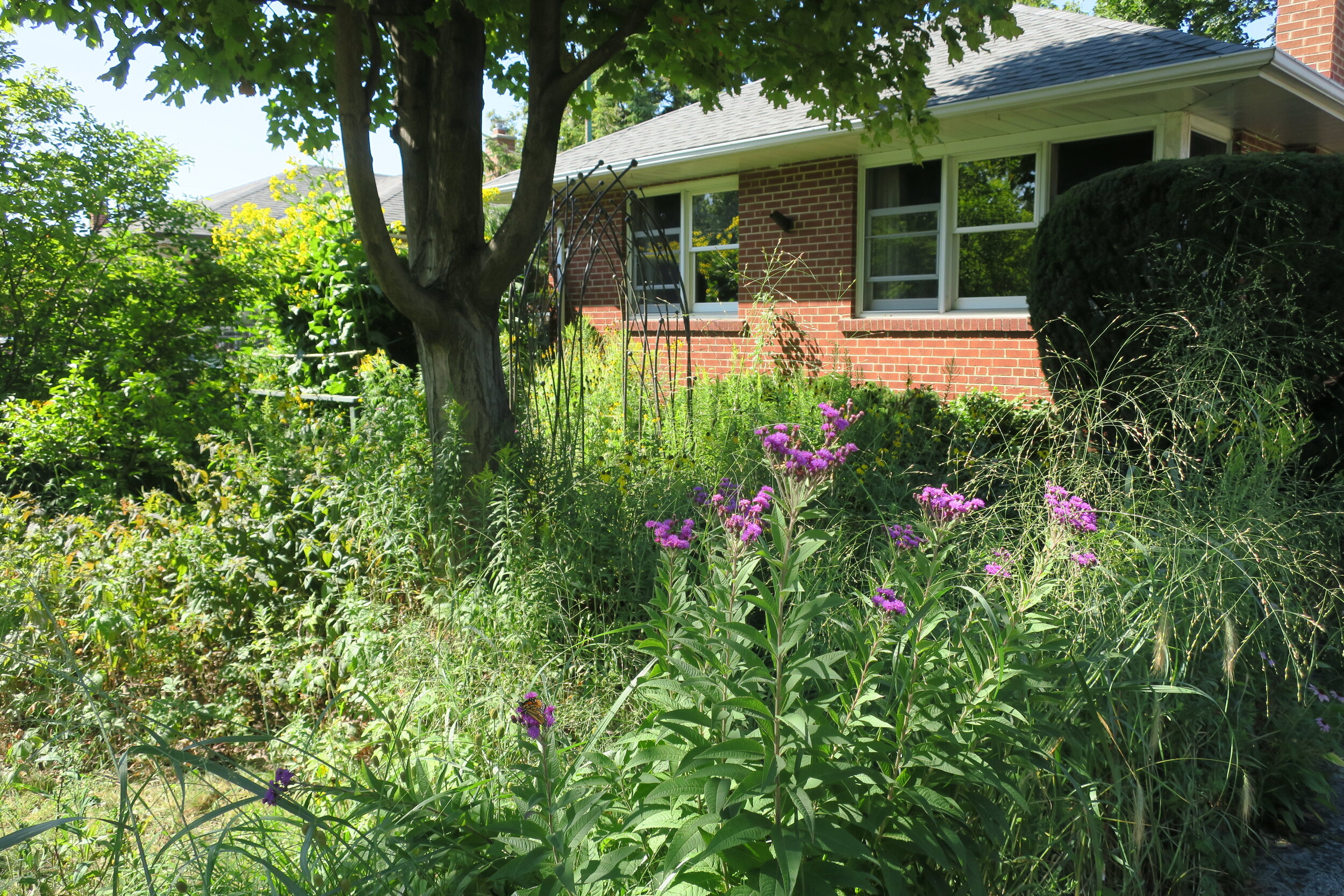Another good thing about the revised bylaw is that it now lists prohibited plants. Goodbye to the vague category of “weeds.” Hello clarity. People will know the species they’re not allowed to plant. And the list of those species is pretty short and reasonable—e.g., poison ivy, ragweed, some non-native species that cause harm in natural areas…The list is open to regular revision, too, so there could be some transparency (one hopes) and consultation (crucially, Indigenous consultation) in formulating prohibited species.
But…
The City has not set even a minimal bar before it investigates complaints, and that means the complaints system is ripe for abuse. A front yard full of vegetable plants, or a tall meadow free of prohibited plants and free of sightline obstructions? Totally legal under the revised bylaw, but your neighbour could make your life miserable with complaints, and you could be subject to Advisory Notices and Violation Notices and inspections where you are required to defend and justify your totally legal planting. It happens all the time now, and it’ll happen all the time under the revised bylaw.
Instead, there should be some kind of minimal screening done at the point of 311 complaint, even the simplest of questions: does the garden include prohibited plants? Are there health or safety issues such as obstructed sightlines? Questions like this would weed out complaints based on “I don’t like it” or “I don’t like you.”
Bottom line: the revised bylaw is still based on the premise that lawns are the approved, desired response to bare earth. How else to explain the fact that the revised grass and weeds bylaw has raised the maximum fine for grass over 20cm to $100,000?! Laughable if it weren’t so chilling.
So, what can people do to bring sanity to enforcement? If you or anyone you know receives an Advisory Notice or a Violation Notice for a yard or garden that isn’t causing any harm, make noise, spread the word, enlist allies, reach out to those, such as myself and many others , who will help you fight it and who will shine a light on all that is wrong with the enforcement regime we’ve still got with this revised bylaw.














